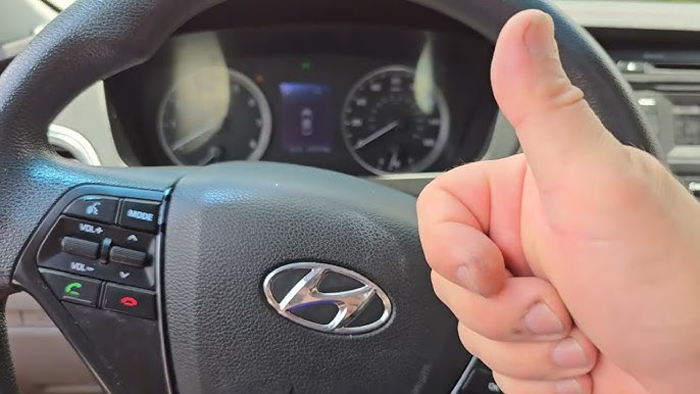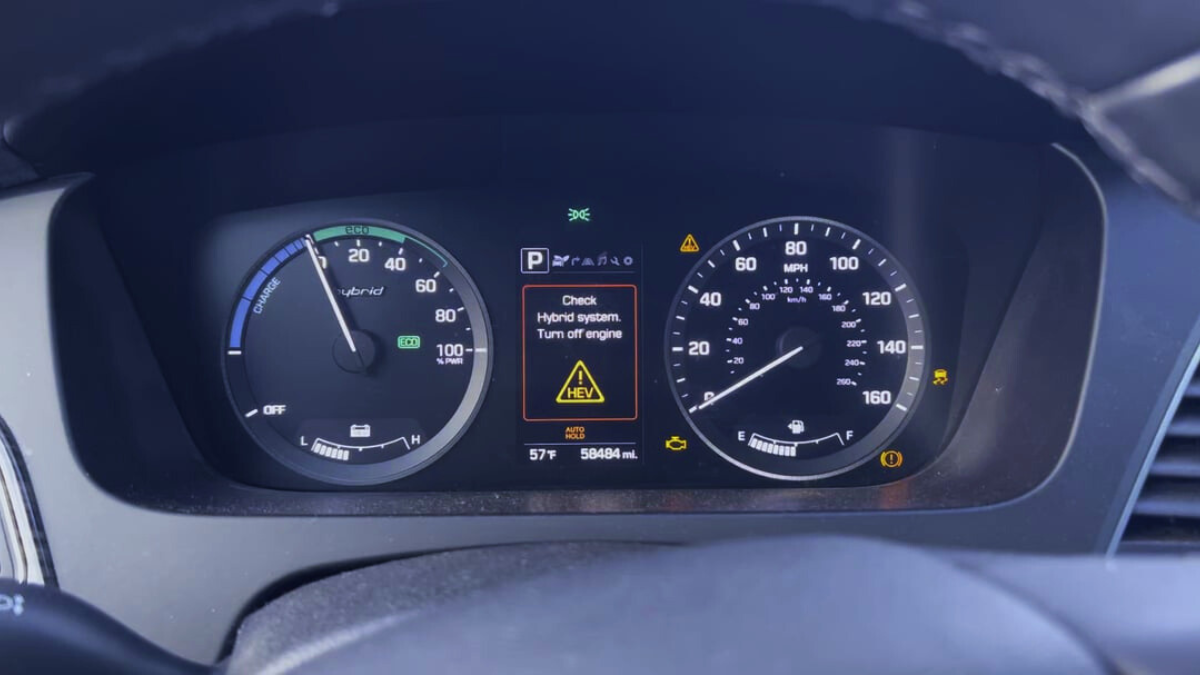So, picture this: you’re cruising down the road in your Hyundai, feeling like you own the asphalt, when suddenly, your car decides to go all “limp mode” on you. It’s like your vehicle just hit the snooze button on performance, leaving you stuck in a frustrating automotive purgatory. But fear not, my fellow Hyundai enthusiasts, because I’ve got the inside scoop on how to perform a magical reset that’ll have your ride back to its peppy self in no time.
When your Hyundai decides to throw a temper tantrum and enters limp mode, it’s like your car is saying, “I’m taking a break, deal with it!” But with a few simple steps, you can show your vehicle who’s boss and reset that limp mode like a pro. So, buckle up and get ready to kick that sluggishness to the curb as I walk you through the secret handshake to bring your Hyundai back to life.
Understanding Limp Mode in Hyundai Vehicles
So, you’re cruising along in your Hyundai when suddenly, it decides to go all drama queen on you and enters “limp mode.” What’s that all about? Let’s jump into this mysterious phenomenon together!
Common Causes of Limp Mode
Ah, the infamous limp mode – the bane of every Hyundai driver’s existence. Here are some common reasons why your trusty steed might decide to take a performance detour:
- Faulty Sensors: Your Hyundai might be throwing a tantrum because of a cranky sensor misinterpreting signals.
- Transmission Troubles: It could be having a moment because of transmission issues – nobody likes a gear that’s not playing nice.
- Electrical Gremlins: Those pesky electrical demons might be wreaking havoc under the hood, causing all sorts of mayhem.
- Engine Woes: From misfiring cylinders to mysterious engine maladies, there’s a whole world of chaos that could trigger limp mode.
Signs and Symptoms
How do you know when your Hyundai is pulling a fast one on you and slipping into limp mode? Look out for these telltale signs:
- Loss of Power: Suddenly, your Hyundai decides it’s had enough and goes on a power-saving spree.
- Stuck in Gear: Ever felt like your car has commitment issues with gears? That might just be limp mode in action.
- Dashboard Drama: The dashboard lights start resembling a disco party – flashing, blinking, doing everything but behaving.
- Limited Speeds: Your Hyundai morphs into a sloth on the highway, cruising at speeds that would make a snail chuckle.
Step-by-Step Guide to Reset Limp Mode in Hyundai

Diagnostic Tools Required
So, you’ve found yourself in a pickle with your Hyundai stuck in limp mode. Before we jump into the reset procedure, let’s make sure you have the right tools in your automotive arsenal. Here’s what you’ll need:
- OBD-II scanner: Think of it as your Hyundai’s personal therapist, helping diagnose those internal struggles.
- Access to the internet: Because in this digital age, even cars need a little online assistance now and then.
Detailed Reset Procedure
Now that we have our tools ready, it’s time to perform some automotive magic and get your Hyundai out of limp mode. Follow these quirky steps to reset limp mode in your Hyundai:
- Find a cozy spot: Well, not for you, but for your Hyundai. Park it safely and ensure it’s in a stable position.
- Locate the OBD-II port: Your car’s belly button is where you’ll connect the OBD-II scanner. It’s usually hiding somewhere near the driver’s seat.
- Plug in the OBD-II scanner: Time to establish that deep connection. Plug in the scanner and let it communicate with your Hyundai’s inner workings.
- Read the trouble codes: Your Hyundai isn’t great at expressing itself, but the OBD-II scanner knows the language. Check the trouble codes to understand what’s bothering your car.
- Address the issues: Once you’ve uncovered the underlying problems, it’s time to tackle them head-on. Fix those faulty sensors, transmission gremlins, or any other troublemakers.
- Clear the codes: Like hitting the reset button on a grumpy computer, clear those trouble codes from the system.
- Test the waters: Fire up your Hyundai and take it for a spin. Feel the power returning as limp mode fades into the rearview mirror.
- Celebrate: You’ve done it! Your Hyundai is back on track, no longer limping along the road. Time to pat yourself on the back and enjoy the smooth ride.
Troubleshooting Tips After Resetting Limp Mode
So, you’ve successfully managed to reset your Hyundai out of limp mode, congratulations! Now what? Let’s investigate into some troubleshooting tips to ensure everything’s running smoothly.
When to Seek Professional Help
Alright, folks, picture this: You’ve done the ol’ reset dance, but your Hyundai is still acting up. When all else fails, it might be time to call in the professionals. Here are some signs that scream “Get help, pronto!”:
- Persistent limp mode activation even after resets.
- Strange noises or odors coming from your vehicle.
- If your car starts speaking in Morse code; it’s never a good sign.
Preventative Measures for Future Occurrences
Ah, the best offense is a good defense, they say! To keep limp mode at bay, consider the following preventative measures:
- Regular Maintenance: Treat your Hyundai like royalty with scheduled check-ups.
- Mind Your Sensors: Keep an eye on those pesky sensors to catch issues early.
- Avoid Heavy Foot Syndrome: Ease up on the pedal; your Hyundai appreciates a gentle touch.
Conclusion
Well, folks, there you have it – the ultimate guide to tackling the dreaded Hyundai limp mode like a pro. From the nerve-wracking power loss to those pesky dashboard lights playing a game of disco, we’ve covered it all. Remember, with the right tools and a sprinkle of know-how, resetting limp mode doesn’t have to be rocket science. Just grab your trusty OBD-II scanner, tap into the magical area of the internet, and voilà! Troubleshooting tips? Check. Professional help? Keep it on speed dial, just in case. And hey, don’t forget to show your Hyundai some love with regular maintenance – those sensors need some TLC too. Stay savvy, stay safe, and may limp mode be a distant memory in your Hyundai adventures!
Frequently Asked Questions
What is limp mode in a Hyundai?
Limp mode in a Hyundai is a safety feature that limits engine performance to prevent further damage. It is triggered by issues like low fluids, broken wires, or faulty sensors. Immediate inspection is crucial to avoid potential breakdowns.
Can a Hyundai regenerate in limp mode?
If the DPF light remains on after attempting manual regeneration, professional cleaning is required. In limp mode, automatic regeneration is disabled, necessitating professional filter cleaning.
How can I turn off limp mode in a Hyundai?
Fixing the underlying issue is the best way to disable limp mode. You can also reset the system by restarting the vehicle or disconnecting a battery terminal.
Why is my Hyundai stuck in limp mode?
Limp mode can be caused by various issues, such as damaged wiring or overheating. An increase in engine temperature may signal a cooling system problem.
How do I exit limp mode on my Hyundai?
You can exit limp mode by restarting the vehicle, checking fluid levels, disconnecting the battery, or using an OBD scanner. It is advisable to avoid driving in limp mode unless necessary and choose less busy routes.

